Let’s be honest. The day we landed in Bogotá we weren’t expecting to love this city as much as we did. Maybe because other places in Colombia have better reputations, Bogotá seemed like a capital you have to see rather than a cool place to visit. Well, three days were enough to change our preconceptions.
Day 1: La Candelaria and Monserrate
We landed in the midst of riots and protests in the capital against the political and economic reforms by the government; most of the demonstrations were peaceful but some violent incidents led to overnight curfew for a few days. Nevertheless, we felt very safe throughout the whole stay.
Our adventure in Bogotá started on the morning after the night we landed, with a browse in the Chapinero area, where our hotel was located. One of the safest areas in the capital, Chapinero is a urban business centre with a good amount of shops and shopping centres and a quick ride away from the centre. Uber cars are not legal in Colombia, but they exist and they are extremely cheap (we are talking about less than £2 for a 20 minutes ride); just make sure one of you sits in the front so the police can’t tell it’s a taxi ride. As much as we like walking, the first hours in Bogotá can be quite challenging due to the altitude, so you might get out of breath easily; hence Uber might come handy.
Our first stop in Bogotá was at a local shopping centre to purchase a local SIM card so that we could have internet access across the whole country. A prepaid SIM card from Claro operator got us 30GB for £10 and we had pretty good signal almost everywhere.
After sorting our technology and food needs, we headed to the centre of the city where we had booked a free guided walking tour of the city centre and its history. While we were waiting for the tour guide, we managed to have a taste of an extremely good espresso from a street vendor who prepared it on an old coffee machine.
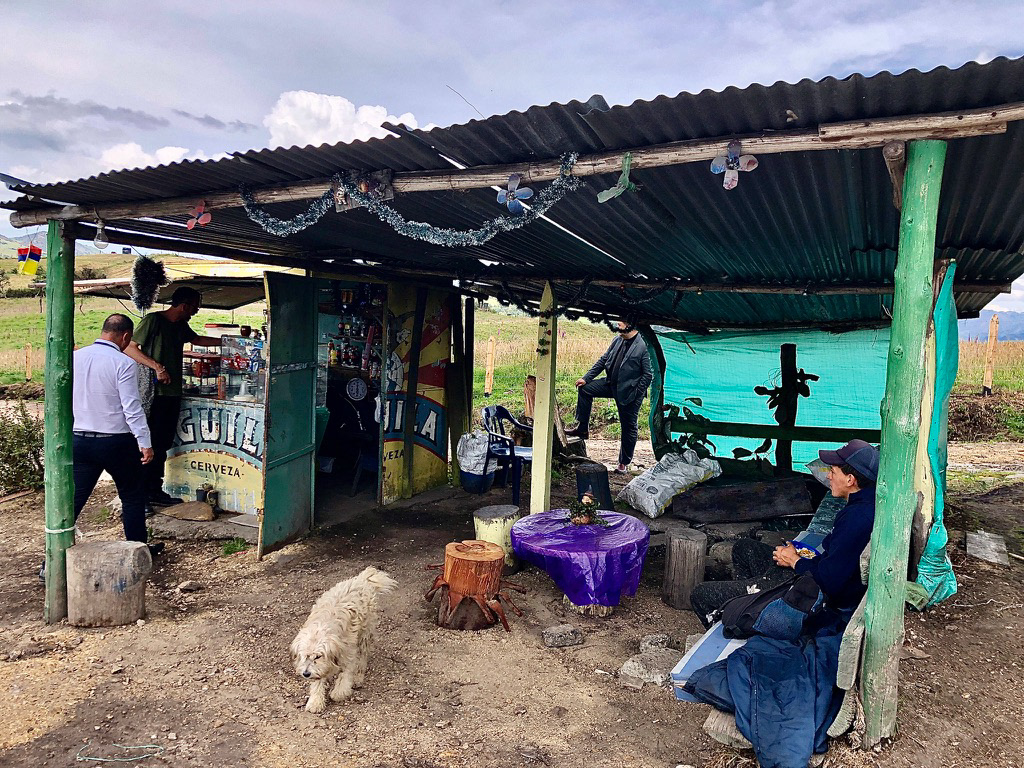
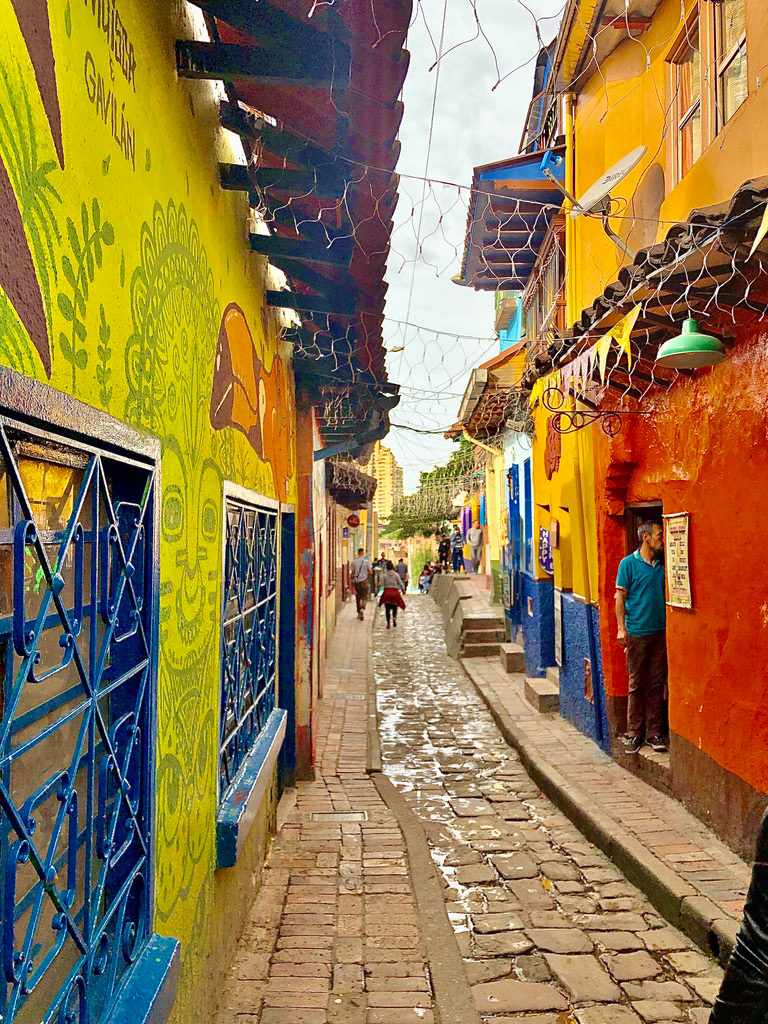
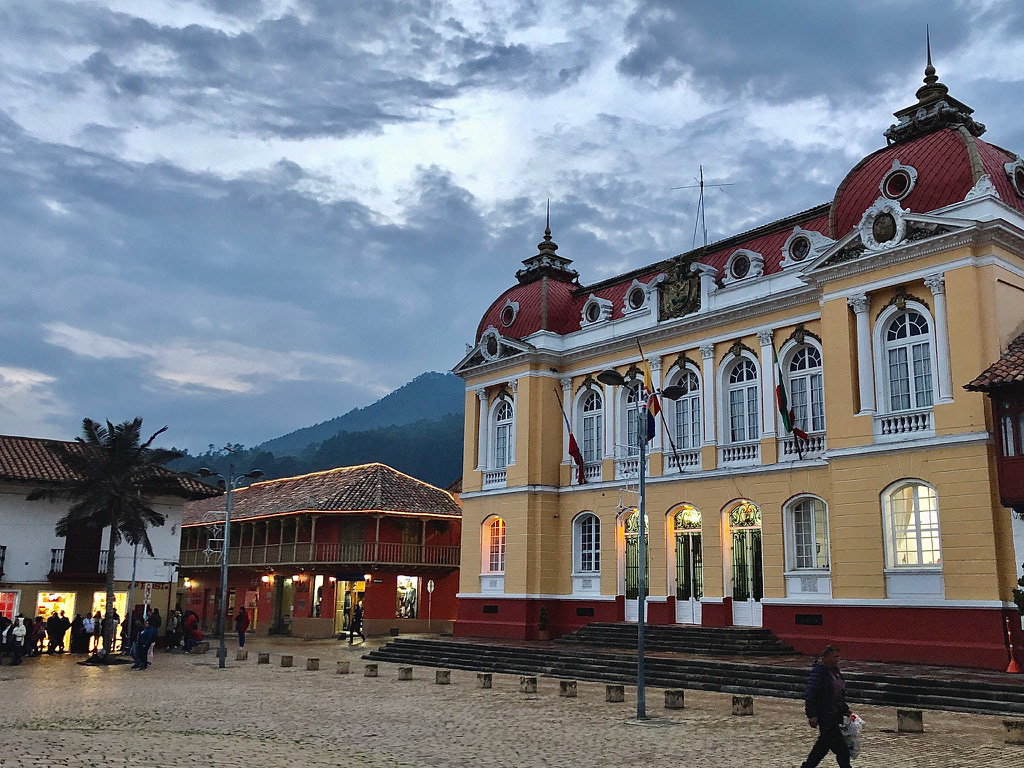

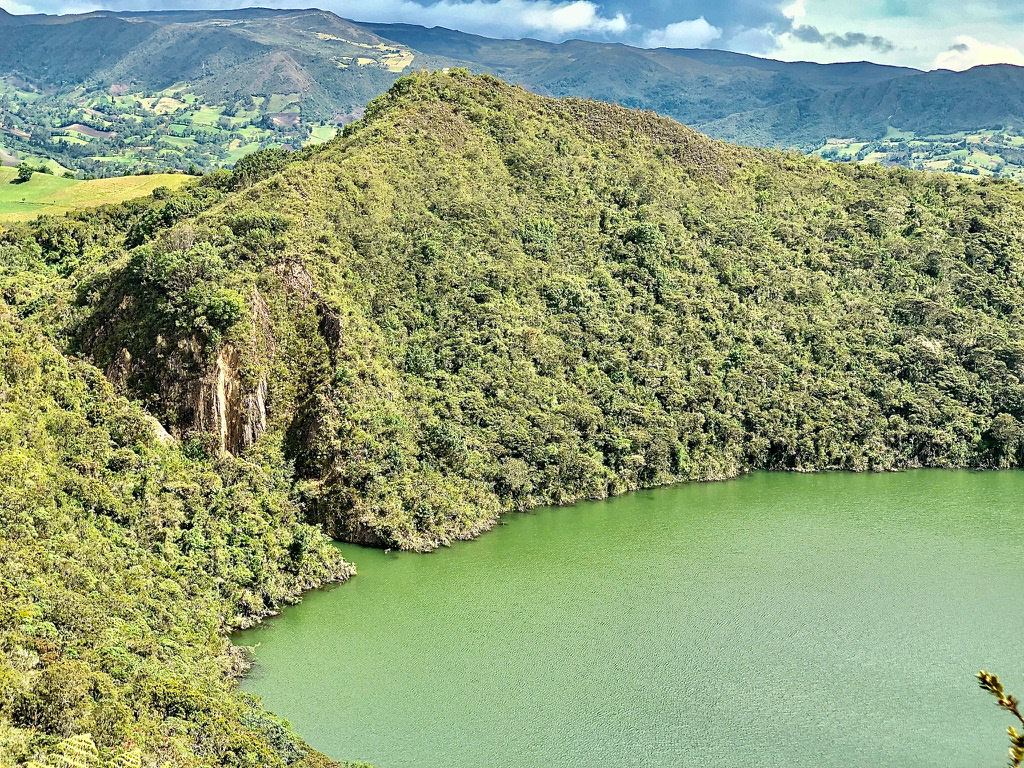



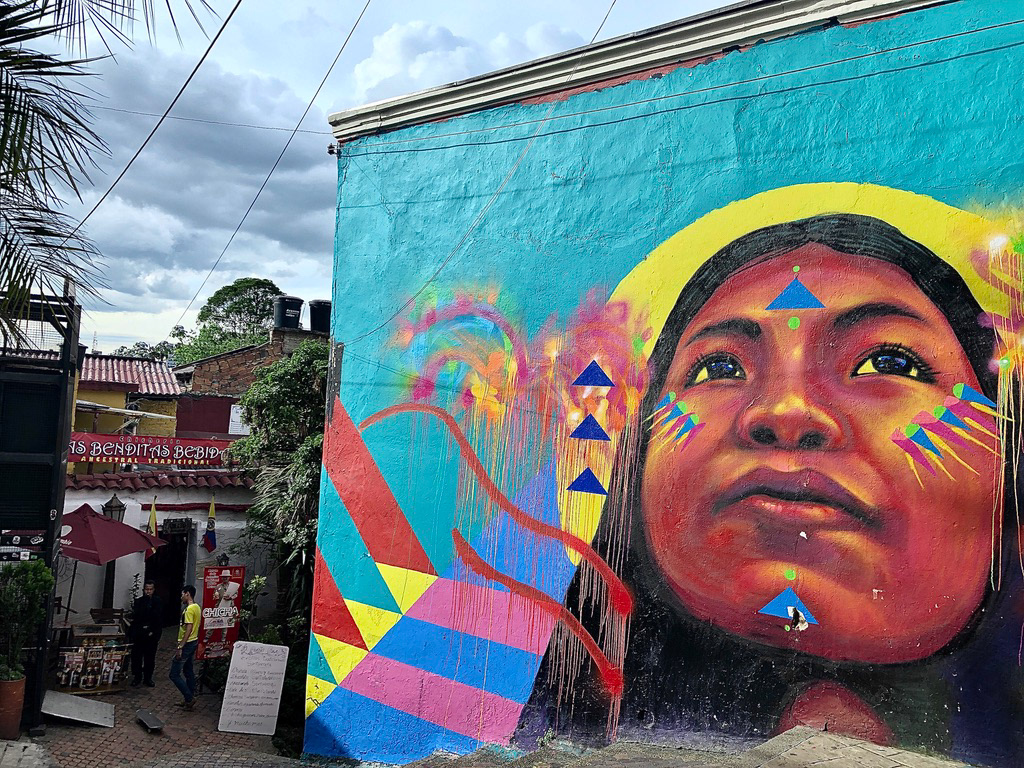
Our guide Santiago from Beyond Colombia (we highly recommend their tours) met us outside the Gold Museum and took us on a passionate journey around the incredible history of the capital and Colombia, which he says he wishes was remembered for its ‘magic realism’. The tour was a great way to explore parts of the city that are culturally rich and exciting. The first stop was in one of the main squares where dozens of men were showing white napkins to each other… turns out, our guide explained, they were illegally trading emerald stones.
Our second break was at Cafe Casa Galeria in the old town, also known as La Candelaria, an area filled with narrow pebbled streets and astonishing murals. At the Cafe Casa Galeria we experienced the old ritual of drinking Chica, a fermented corn drink similar to Kombucha, which includes a toast to Mother Earth. They also made us try Chuchula, another old recipe for a protein-packed drink made of nine grains, which tasted like a delicious creamy hot chocolate with a cinnamon kick. Coca tea is another quite popular drink in Bogotá; it comes from Coca plants so it has traces in it, hence it is not recommended to bring back to your country as dogs may pick it up at the airport. Nevertheless, it is legal to drink it and is highly recommended to fight the effects of jet lag and altitude. The tour continued throughout the streets of La Candelaria, past the Botero Museum (which unfortunately was closed), all the way to Plaza Bolívar, the central square with the Parliament building that suffered several infamous attacks during the eighties and the nineties.
The tour ended with a visit to the Gabriel Garcia Marquez Cultural Center, where we could admire the view of the magnificent mountainous backdrop of the Andes surrounding the city. As the light suggested it was going to be a beautiful sunset, we decided to take the cable car all the way up to Monserrate, a 10,000 feet high mountain that dominates the city centre and offers breath taking 360 degrees views.
After admiring the sun going down from the height of Monserrate, it was time for a cab back to El Chapinero, where we had a delicious, Italian meal and wine at Julia (I highly recommend the Artichokes Fonduta as a starter… you’ll never forget about it).
Day 2: The belly button of the world and the salt cathedral
We booked a guided tour for day 2. Little did we know we were going to spend a day with the most unique tour guide you could ever meet. Marcelo has been living across multiple countries, speaks 5 languages, has Italian origins, has worked as a chief on luxury cruises and is very passionate about his homeland. He is the embodiment of what a tour guide should be: extremely knowledgeable about every possible matter in Colombia’s past and present, in love with his country and willing to deliver an exceptional experience.
The destination of our tour was Lake Guatavita and the salt cathedral of Zipaquira. It took us about 2 hours drive (mainly because of the traffic driving out of the city) to reach Guatavita; two hours during which Marcelo literally swarmed us with everything you need to know about Colombia. So we learned about how society is layered into Stratas (literally layers) from 0 to 6 (0 being the poorest social status – the part of the population who live in the Comunas), how taxation works so that those in the higher stratas pay more taxes than those in the lower ranks; we also learned how cats are considered sacred; that emerald, gold and leather are the highest trading materials in the country. Another thing we learned is that the colours of the Colombian flag represent the sky (blue), the sun (yellow) and the blood of Muiscas (red – Muiscas were the pre-Colombian populations before the Spanish invasion). Finally we came to know how the social system tries hard to help the homeless by giving them the job to collect and recycle the city’s rubbish and how there is a sense of community to help each other (Marcelo used the Italian expression, ‘Una Mano lava l’altra e tutte e due lavano il viso’ – ‘A hand washes the other hand, both hands together will wash the whole face’).
After two hours of history lessons and crazy narrow steep mountain roads, we finally reached the site of Guatavita, where we were welcome by a local guide who enlightened us with more history – which included the legend of El Dorado (the golden one). Before reaching the actual lake, we hiked for 30 minutes through two different ecosystems (forest and Andes), until we reached the top of the hill where the view of the lake provided us with a very unique landscape. The bottom of the round-shaped lake is said to be covered with gold and unreachable (hence the nickname ‘belly button of the world’). For years different expeditions have been trying to find ways to reach the bottom, from excavating tunnels on the sides, to sending expert divers, but all efforts have miserably failed for different reasons. Nevertheless, an astonishing 90% of the gold found around the sides of the lake during the Spanish domination was sent to Europe.
After our visit to Guatavita, Marcelo drove us to the nearby village of Zipaquira, where we visited the Salt Cathedral, an underground Roman Catholic church built within the tunnels of a salt mine 200 mt underground. We are not Catholic nor religious, but this place – designed by Mexican architect Carlos Mijares – deserves a visit regardless of your beliefs. From the 14 stations of the cross, to a 3D cinema, shops, a VR cinema, a light show, a salt mirror lake, a mine museum and breath-taking architectures and chandeliers (all 200 mt underground), The Salt Cathedral of Zipaquira is indeed one of the most unique places on earth. And you cannot miss it if you’re in Colombia.
It was past sunset when we left Zipaquira after a quick walk around the village, to drive back to Bogotà. Free spirit Marcelo – who during the hike in Guatavita had been picking up mushrooms, kissing plants and telling us of when he walked barefoot from Cartagena to Bogotà – still managed to fill the 2 hours drive with more insights and tips that we actually found very useful for the rest of our stay in the country.
Soon enough we were ready for a good night’s sleep, before the early flight to Armenia, where the coffee region, Cocora Valley and Salento awaited us.
